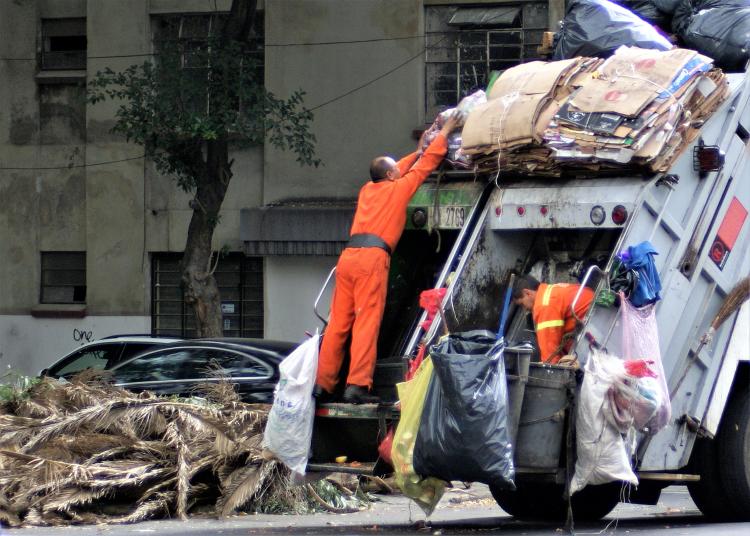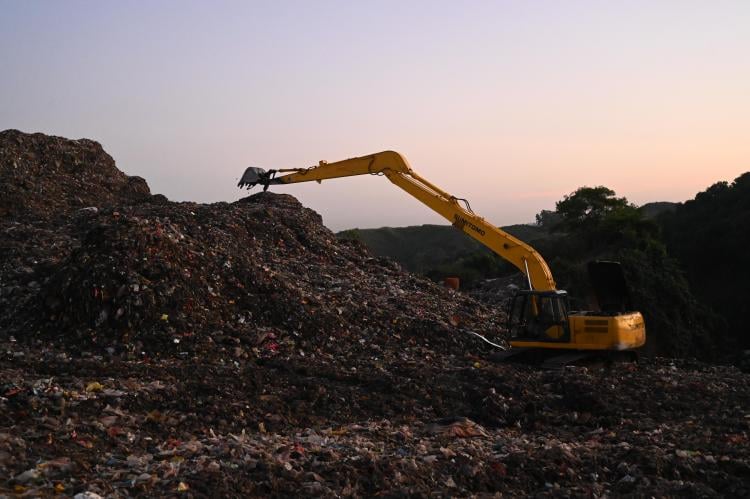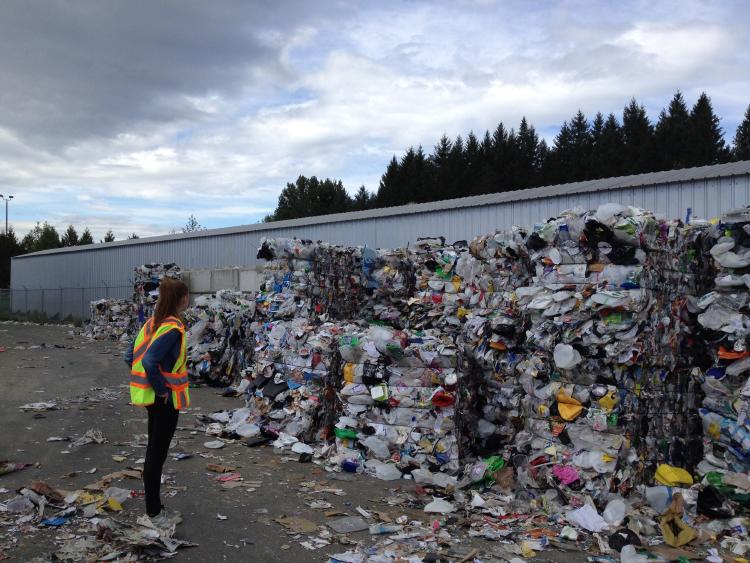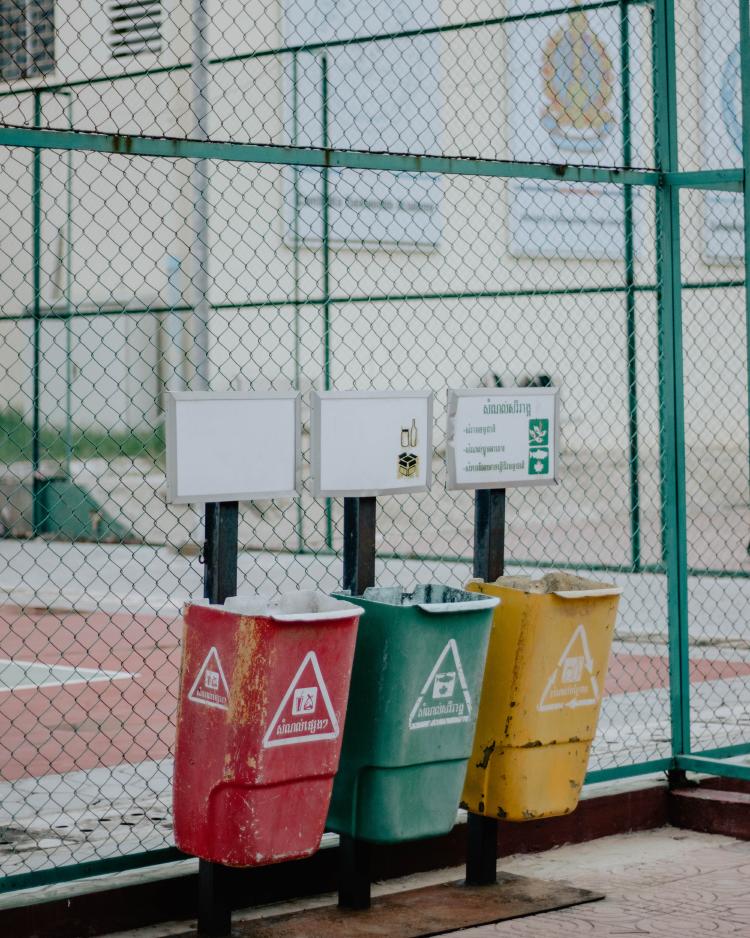
A great portion of our waste can be composted, not only at home but in a large scale as an organized Solid Waste Management System. That's the best way to recover the energy involved in products manufacturing or food to grow. Composting process of solid waste is not only a chance to reduce garbage, instead it is a relatively new and promising industry that can afford to produce black gold in high quantities and quality. There are three methods to do it and here we`ll tell you how the decomposing process works in each one.
Compost is a useful practice not only at home. Of course, composting in the backyard or with an indoor compost bin is something meaningful but it is also important to think about what happens with community food scraps, and sludge sewage. If you haven't started composting yet and want to give it a try, here you have a Complete Guide on how to composting at home.
But, what happens with the rest of food scrapes we can`t compost or the waste of the rest of the people, the non-compost householders. Well, here is where Municipal Solid Waste Management plays its part.
A lot of questions come to mind if we wonder about the Composting Process of solid waste. And here you will understand how does it works.

Photo by Carl Campbell on Unsplash
Decomposing process is the same at small such as large scale in technical terms. But there are three different composting process of solid waste. It varies considering the amount of waste, and the facilities design. In other words, every decomposing process is the same but changes the rates of intervention in it, in different controlled conditions of the process of compost.
This is a Trash Safari, join us in this trail.
First stop, here we see how savage waste is collected by municipal trucks. Once this happens, trash have only three possible destinies.
Almost never seen, landfills are like a mythical invisible monster. They came to be a solution years ago when incineration wasn't controlled and turned into a hazardous practice for our health by causing high percentages of air pollution. But, time passed and population increased, and there is no landfill which undertakes the weight of all the tons and tons of waste we produce every day. They seem, now, like those ancient gargoyles supporting colossal monuments upon their shoulders. Poor landfills, suffering the karma of its name while they could be receiving the goods of the composting process of solid waste.
As Britannica explains, a fundamental element of a sanitary landfill is a refuse cell, where solid waste is compressed in thin layers to, then, puted one upon another. After that, they are capped with plastic membrane, clay, and soil.

Photo by Mumtahina Tanni from Pexels
This kind is usually combined with sanitary landfills. Incineration systems can reduce 90 % of waste storage by burning it in big furnaces. This process has two stages. At first, waste is taken to an ignition and volatilization state; then, in the second part, they oxidate the remnant material. The by-product of this process is called Fly Ash, this one and other gases are released by an airstream. They are also treated by control emission devices like baghouse filters, acid gas scrubbers and electrostatic precipitators. Actually a Furnace Operation is more complicated than that, and although it reduces a lot of refuse volume, there is a portion of residuary material, bottom ash and fly ash, which is driven to landfills for final treatment.
This is the moment we were waiting for (claps) Until this stage, we have seen two of the three routes the solid waste can take. But in both we ran into risky systems that make huge efforts to make trash disappear as it has never existed. The consequence: there is a lot of energy lost, besides the percentages of ground and air pollution. Not only because of all the machines and sophisticated technology at the service of this process, but the sad final products face.
Don´t cry. Large Scale Compost Facilities are here to reclaim their lives and give them another shot by the composting process of solid waste.
But, wait a minute, because usually, solid waste is not but a concoction of organic matter and all kinds of debris, sludge and inorganic refuse too. Yes, that's why at first a pre-treatment of solid waste is necessary. For having a successfully decomposing process, these facilities have some devices specialized to separate waste.

Photo by Mumtahina Tanni from Pexels
Passengers, we`ve arrived at this Circular Economy tribute. Where composting process of solid waste takes place. This is like the inside of a magician hat, we are going to break the law and reveal his secrets.
When the truck delivers the solid waste into this facilities it comes the separation and sorting phase. For that, this facilities count with an automated sorting system which separate metal, plastic, glass, cans, from the organic waste. This machine has like an magnetic wagon which separates iron, then it has different obstacles to the other materials and catch them up according their diameter. Once all the waste is "clean" we have a readily raw material to start the best part.
Magic happens, understanding that magical things are the nature ones. Here is where the organic matter breaks down turning food scraps, and other organic waste, into rich soil. The benefits of compost are many: enhance the soil, prevent erosion and pests, balance the pH rates, reduce waste and create an optimum environment for agricultural activities. Another fundamental reason is that composting is a great tactic to avoid the harmful gasses emission that traditional destinations of solid waste have.
What differs each one are the control strategies, considering that decomposing process is a biological thing. The way the variables are regulated in very controlled conditions determine the final product stabilization.
In another words, composting process of solid waste is the industrial production of commercial organic soil, where solid waste is considered as raw material.
These are the three most common high scale technologies involved in composting process of solid waste:
✔ Windrows
✔ Static Aerated Pile
✔ In-Vessel
These are long and high feedstock piles of about 1.5 to 3 meters high and 3 to 6 meters wide , builded over impermeable surface.
Here, the decomposing process is the same as the Pile Compost in the backyard but with the difference is necessary trucks or front-end loaders to turn the pile, specialized machines to handle that magnitude of material. Turning compost will provide porosity and oxygen. Composting process of solid waste here can take
This kind is closely similar to Windrow style, with the difference that they are placed at networks which have pipes and blow frequently the pile to assure the air circulation. So, they don't need to be turned mechanically. If the compost has a lot of sludge, the moisture can be controlled by adding wood chips or cardboard pieces. The top of the pile can be covered with mature compost to keep the odors at the line and isolate the pile from ambient temperatures.
Here, the solid waste is confined in big containers or rotary drums which are mechanically turned to maintain the material aerated. The temperature and moisture is controlled by probes inserted into the mass. This method is usually combined with the other to complete the composting process of solid waste, specially of sludge sewage.
A colorful data: This system has small scale options, readily suitable for use in restaurant, shoppings, etc. but needs an expert in its management. It can be used no matter climate inclemencies.

No matter what kind of method is used, it is very important to let compost be cured. Curing phase allows it to definitely stabilize. As Carolina Compost explains, stabilization reduces the electrical conductivity, which can damage the soil. So, Curing is a prize for patience people. Like old wines, compost becomes richer the longer it rests.
Composting process of solid waste goes the same as our Composting In Garden but with the appropriate technology to handle such amounts of matter. Solid waste management comes to be a fundamental axis in a healthy society organization. An axis which goes through many fields to undertake. With a collaborative perspective for providing enhancement at the disposal treatment for a stable marketable by-product such as community responsibility in this item.
Technology will respond to that change of attitude and social requirement, and there will be ecological engineering committed with the environment at the time it takes care of the community's health

This change starts at home with the split of waste in organic and inorganic categories. That will reduce costs and accelerate the process of compost in recycling facilities. Let's be honest, the composting process of solid waste is better than sweeping our trash under the carpet. Anyway, that would never work out for Aladino.
Hope you`ve enjoyed the Safari and you go continue revealing this tricks. They will make us all live in a better place.